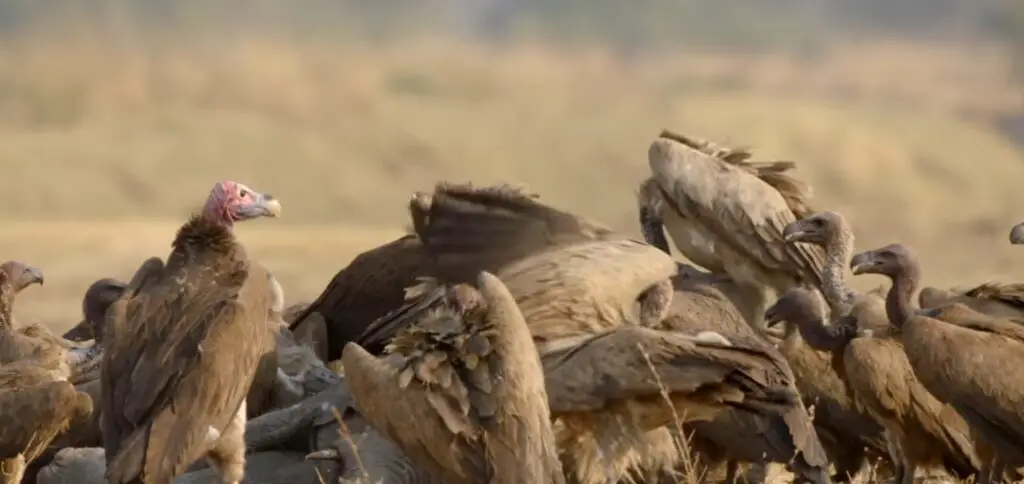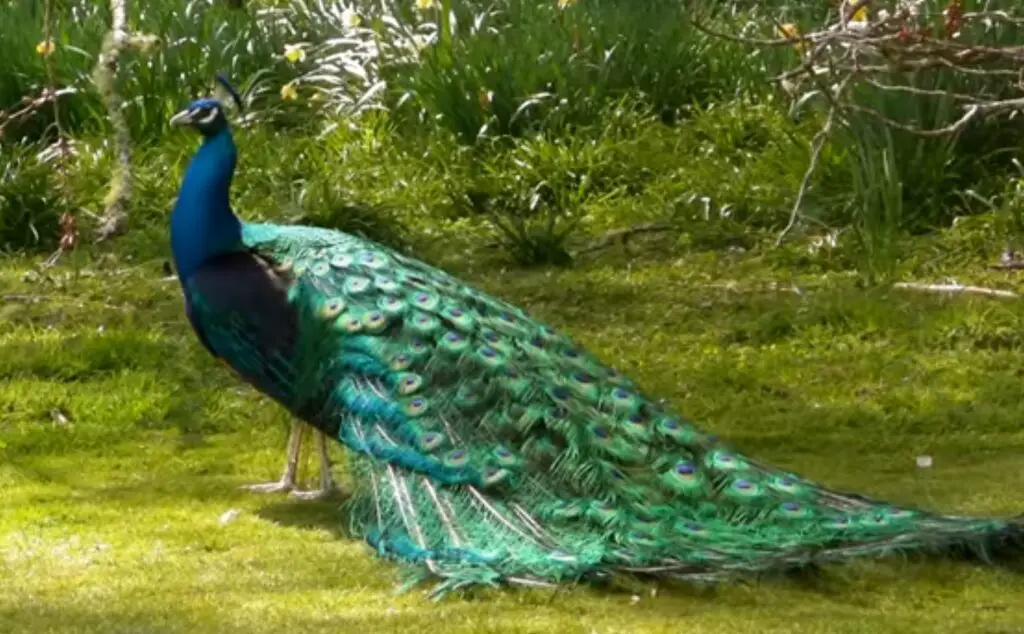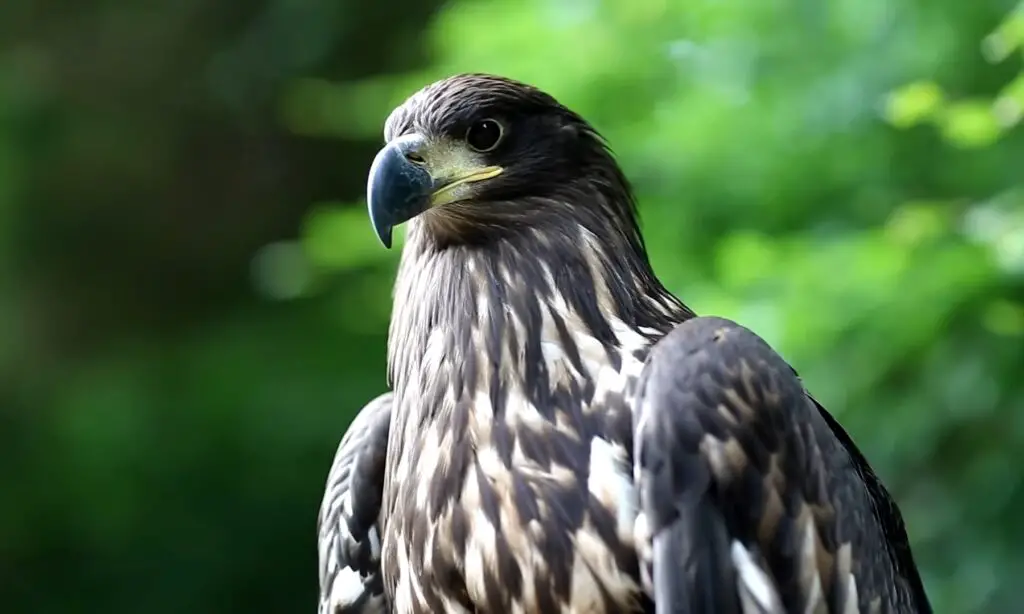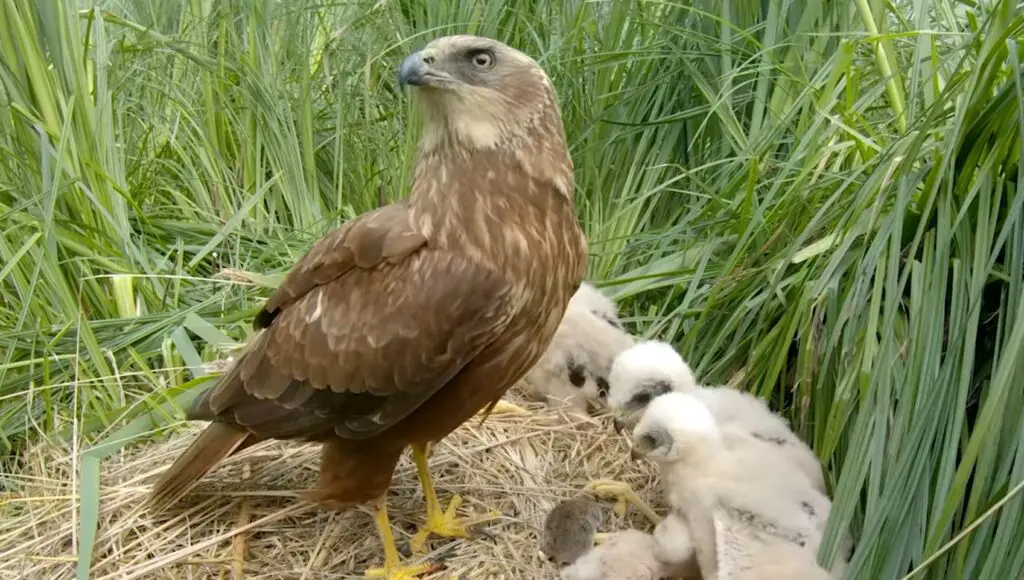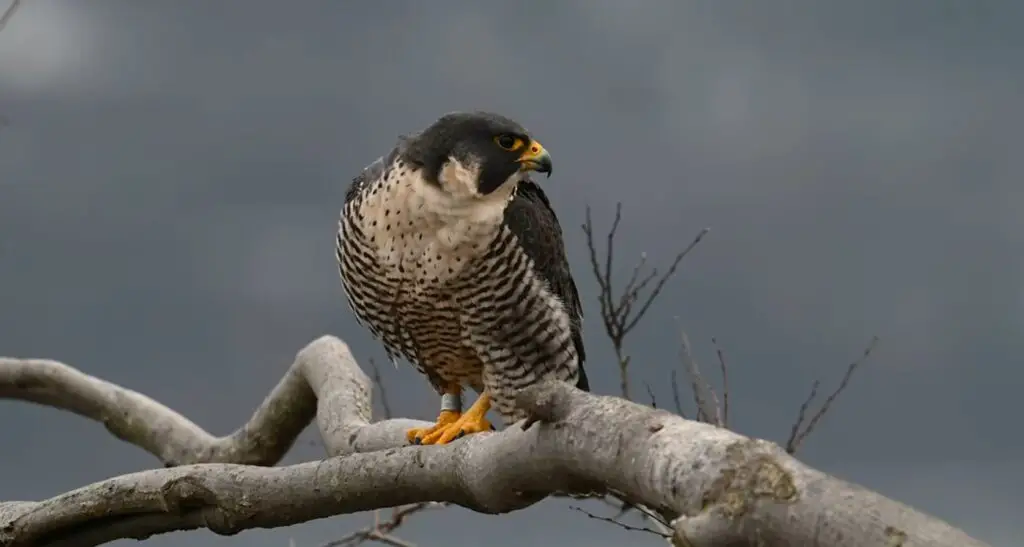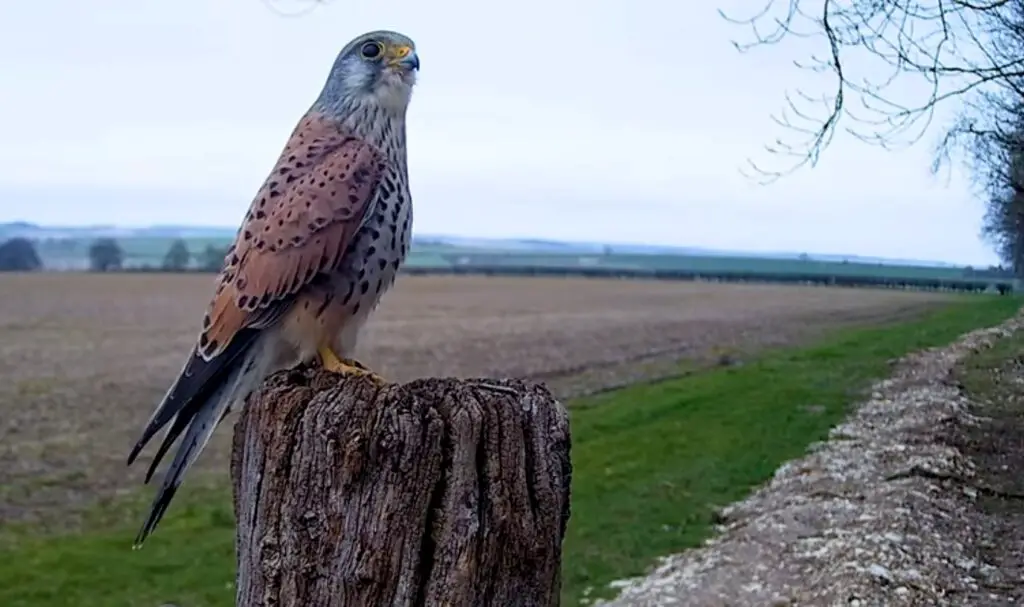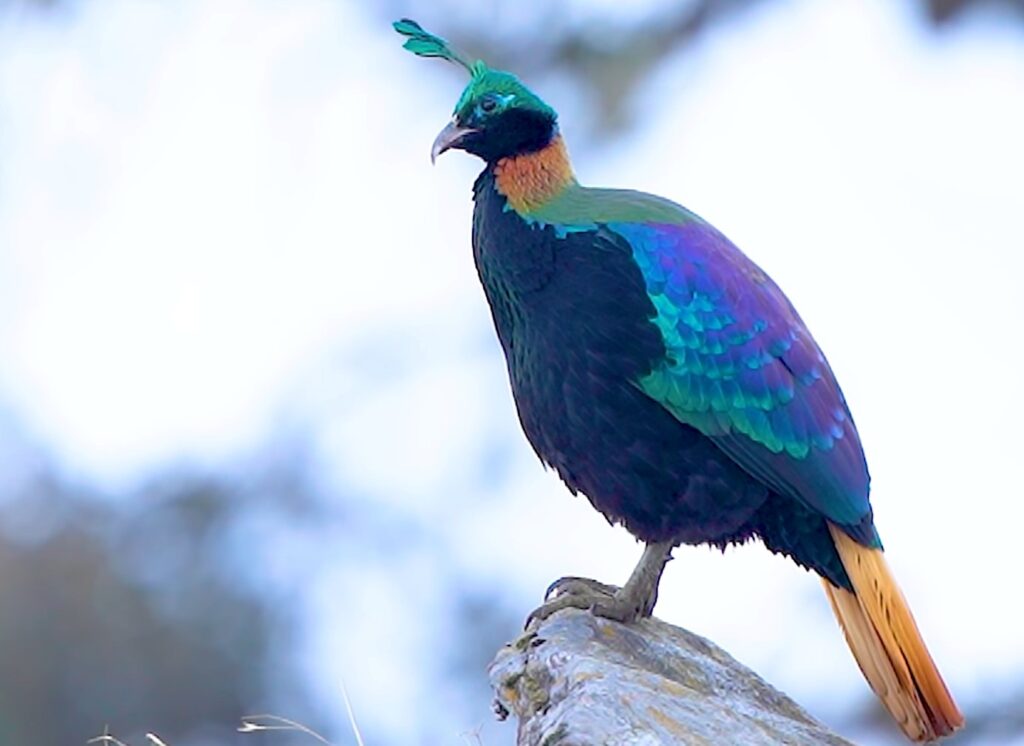Vultures are large birds of prey that are known for their scavenging habits. They are found in every continent except Australia and Antarctica. They are unique in that they feed almost exclusively on the carrion of dead animals, playing a critical role in maintaining the balance of nature.
What are Vultures?
Vultures are a group of large, scavenging birds that are found on every continent except Australia and Antarctica. There are 23 species of vultures, and they belong to two families: Accipitridae (which includes eagles, hawks, and kites) and Cathartidae (which includes New World vultures).
Vultures are known for their bald heads and strong beaks, which allow them to tear into the tough hides of dead animals. They also have sharp eyesight, which helps them spot carrion from great distances. They are not picky eaters and will consume any type of meat, including roadkill, carcasses of large mammals, and even the remains of other birds.
Vultures are birds of prey that are commonly associated with death and decay. They are often depicted as ugly, menacing creatures, but in reality, they play a crucial role in maintaining the balance of nature. In this article, we will explore the world of vultures and examine their importance in the ecosystem.
What kind of bird is a Vulture?
Vultures are large birds that belong to the family Accipitridae, which also includes eagles, hawks, and kites. There are 23 species of vultures, which are found in every continent except Australia and Antarctica. They are known for their distinctive bald heads and necks, which are thought to help them keep clean when feeding on carrion.
Vultures are scavengers, which means they feed on the carcasses of dead animals. They have a highly efficient digestive system that allows them to consume and digest even the most putrid meat. This adaptation is essential because carrion can be a dangerous source of bacteria and disease. They are immune to many of these pathogens, which means they can consume the carcasses of animals that would otherwise be a health risk to other animals and humans.
Why called Vulture?
The term “vulture” comes from the Latin word “Vulturus,” which itself has roots in the Latin verb “Volvere,” meaning “to pluck” or “to tear apart.” The name was given to these birds because of their feeding habits, as they are known for scavenging on carrion, tearing apart, and consuming dead animals.
The name accurately describes the behavior of vultures, which have specialized adaptations for consuming carrion. Their sharp beaks and strong neck muscles allow them to tear through tough flesh, while their highly acidic stomachs can digest and process decaying meat. The term “vulture” has been widely used to refer to these birds across various languages and cultures, reflecting their distinctive feeding habits and ecological role as scavengers.
What does Vulture Eat?
Vultures are primarily scavengers, meaning they feed on carrion, which is the decaying flesh of dead animals. They have specialized adaptations for consuming and digesting carrion efficiently. Vulture diets typically include:
Carcasses of Large Animals: Vultures feed on the carcasses of various animals, including mammals like deer, cows, and horses. They may also consume the remains of birds, reptiles, and occasionally fish.
Fresh and Aged Carrion: While vultures primarily scavenge on carrion that is in an advanced stage of decomposition, they can also feed on relatively fresh carcasses. This versatility allows them to make use of a wide range of food sources.
Bone Marrow: Vultures have strong beaks that can break through the bones of carcasses, allowing them to access the nutritious bone marrow inside. This ability gives them an advantage over other scavengers that may struggle to access this resource.
Soft Tissues: Vultures have a preference for consuming the soft tissues of carcasses, such as organs, muscles, and internal organs. They use their sharp beaks and powerful neck muscles to tear through the flesh and access the nutrient-rich parts.
It’s worth noting that vultures are not predators and typically do not hunt live prey. They rely on locating and accessing carrion as their primary food source. Their ecological role as scavengers helps to maintain the cleanliness of ecosystems and prevent the spread of diseases from decaying carcasses.
Specialty of a Vulture
Vultures have several unique characteristics and adaptations that make them highly specialized for their ecological niche as scavengers. Here are some of their notable specialties:
Carrion Feeders: Vultures are specialized scavengers, feeding primarily on carrion (dead animals). Their digestive system is adapted to handle decaying flesh, and they have powerful beaks and neck muscles that allow them to tear through tough skin and muscles.
Acute Vision: Vultures have excellent eyesight, which enables them to spot carrion from great distances while soaring high in the sky. Their keen eyesight allows them to locate food sources and compete with other scavengers.
Efficient Digestion: Vultures possess highly acidic stomachs and a robust immune system that allows them to consume carcasses infected with bacteria, viruses, and toxins without getting sick. This ability helps prevent the spread of diseases from decaying carcasses.
Strong Flight: Vultures are skilled and efficient fliers. They have broad wings, which allow them to soar for long periods without much flapping. This flight style helps them cover large areas in search of food.
Social Behavior: Vultures often gather in groups called roosts or colonies. They engage in communal roosting and feeding, which can help them locate food more efficiently and provide protection against predators.
Conservation Indicators: Vultures play a critical role as “clean-up crew” in ecosystems. Their presence and behavior can provide valuable information about the health of an ecosystem and the availability of carrion. Their decline in certain regions has highlighted environmental issues and the importance of conservation efforts.
These specialized characteristics and behaviors have evolved over time, allowing them to occupy their unique ecological niche as efficient scavengers.
Appearance and Behavior
There are 23 species that vary in size and coloration. The most distinctive feature is their bald heads, which help them to stay clean while feeding on carrion. Vultures have strong beaks that are adapted to tearing flesh and a keen sense of smell that enables them to locate carcasses from great distances. They have broad wings that allow them to soar for long periods without flapping and can reach altitudes of up to 20,000 feet.
Vultures are social birds that often feed in groups. When they locate a carcass, it will circle overhead until other vultures arrive. Once a group has formed, the birds will take turns feeding, with the dominant birds eating first. They have a unique digestive system that enables them to safely consume bacteria-laden carrion. They have a highly acidic stomach that can destroy harmful bacteria and viruses, making them immune to diseases that would be fatal to other animals.
3 Vulture facts
Remarkable Soaring Abilities: Vultures are exceptional soarers and can spend hours in flight without flapping their wings extensively. They take advantage of thermal updrafts, using them to gain altitude and effortlessly glide across vast distances in search of carrion. Their large wingspan and efficient flight make them well-adapted for covering expansive areas.
Bald Heads and Necks: Many vulture species have featherless heads and necks, which may seem unusual at first glance. However, this adaptation serves a practical purpose. When they feed on carrion, their featherless heads and necks minimize the accumulation of bacteria and other parasites that can result from coming into contact with decaying flesh. The lack of feathers also prevents feathers from becoming soiled with blood and other substances, which could be challenging to clean.
Important Ecological Role: They play a vital ecological role as scavengers. They efficiently clean up carcasses, preventing the spread of diseases from decaying animals. By consuming carrion, they help maintain the overall health and hygiene of ecosystems. Their unique digestive systems, which can handle and neutralize pathogens, make them particularly suited for this task. Thus, vultures contribute to the ecological balance and functioning of their respective habitats.
These facts showcase some of the fascinating adaptations and ecological significance of vultures in the natural world.
Vultures eat Eyes First
The notion that vultures eat eyes first is a common myth and not entirely accurate. While vultures do feed on carcasses in a specific manner, the idea that they specifically target the eyes first is not supported by scientific evidence.
When they feed on a carcass, they often begin by tearing through the soft tissues, such as the muscles and internal organs. This is because these parts of the carcass are relatively easier to access and provide immediate sustenance. The exact feeding pattern can vary among vulture species and individual birds, as different individuals may have different feeding preferences or access points on the carcass.
The perception that they target the eyes first might have arisen due to the exposed and easily accessible nature of the eyes on a carcass. As they feed, the eyes may become exposed as they tear through the flesh, leading to the misconception that they specifically target this area first. However, it is important to note that they do not have a fixed or exclusive feeding pattern, and their feeding behavior can vary based on the specific circumstances and condition of the carcass.
It’s also worth mentioning that vultures are not anatomically designed to extract eyeballs specifically. Their beaks are adapted for tearing flesh, and they consume the available soft tissues rather than focusing on specific body parts.
Vulture an evil bird
They are not evil birds. They play a vital role in ecosystems as scavengers, helping to clean up carrion and prevent the spread of disease. They primarily feed on dead animals, which helps to recycle nutrients back into the environment. Their unique adaptations, such as keen eyesight and a specialized digestive system that can handle decaying flesh, make them well-suited for this ecological niche.
Unfortunately, vultures have sometimes been associated with negative connotations due to cultural beliefs, superstitions, or their appearance as carrion feeders. However, these perceptions are not based on their behavior or inherent nature. They are simply doing what they evolved to do, and their ecological role is crucial for maintaining the balance of ecosystems.
What eats a Vulture?
Vultures are large birds of prey that are scavengers and feed on carrion (dead animals). As such, there are few natural predators that would actively hunt and kill a vulture. However, there are some animals that may eat it if they come across a dead or injured one, or if they are desperate for food.
Some potential predators of vultures include large carnivorous animals such as lions, hyenas, and wolves. These predators may attack and kill vultures if they see an opportunity to do so, but it is relatively uncommon.
Other potential threats to vultures include humans, who may hunt them for sport or for their body parts, and environmental factors such as habitat loss and pollution.
Vultures in Pakistan?
Yes, Pakistan is home to several species of vultures. Historically, the country had significant populations of birds, however, their numbers have declined dramatically in recent decades. The main reason for this decline is the widespread use of a veterinary drug called Diclofenac, which is toxic to vultures.
Diclofenac is administered to livestock, and when vultures feed on the carcasses of treated animals, they suffer from kidney failure and die. This has led to a sharp decline in vulture populations throughout South Asia, including Pakistan.
Efforts are underway in Pakistan to conserve and protect vultures. Conservation organizations and governmental agencies are working to raise awareness about the importance of vultures, promote the use of alternative drugs in veterinary practices, establish safe feeding sites, and breed vultures in captivity for reintroduction into the wild. Despite the challenges, ongoing conservation efforts provide hope for the recovery of vulture populations in Pakistan.
Why Vultures are endangered in Pakistan?
Vultures in Pakistan are primarily endangered due to the use of the veterinary drug diclofenac. This drug is used to treat livestock, and when vultures feed on the carcasses of animals that have been treated with diclofenac, it causes kidney failure and death in the vultures.
The decline in their populations due to diclofenac has been particularly rapid and severe in Pakistan, with some species declining by more than 95% over the past few decades. This has led to a significant ecological impact, as they play an important role in the ecosystem by removing and processing animal carcasses.
Efforts are underway in Pakistan and other countries to reduce the use of diclofenac and promote alternative drugs that are safe for vultures. In addition, captive breeding programs have been established to try to reintroduce vultures into the wild and boost their populations. These efforts are critical to ensuring the survival of these important birds of prey.
Conservation Status
Many vulture species are threatened with extinction due to habitat loss, poaching, and the use of toxic veterinary drugs. In Asia, the use of the anti-inflammatory drug diclofenac in livestock has caused a sharp decline in vulture populations. The drug is ingested by the vultures when they feed on the carcasses of treated animals, causing kidney failure and death. Conservation efforts are underway to protect them, including the banning of diclofenac in several countries and the creation of vulture-safe feeding zones.
Ecological Importance
Vultures play a critical role in maintaining healthy ecosystems by disposing of animal carcasses that would otherwise rot and spread disease. Without vultures, populations of scavenging animals such as rats and feral dogs would increase, leading to higher rates of disease transmission and human-wildlife conflict. In addition, they provide important cultural and economic benefits to local communities through ecotourism and the sale of vulture-related products.

